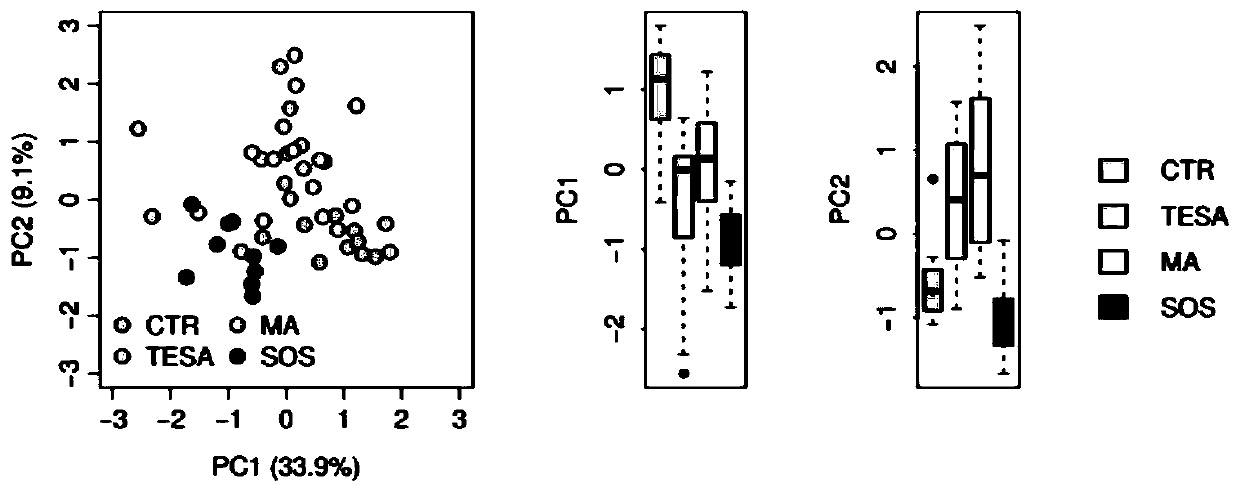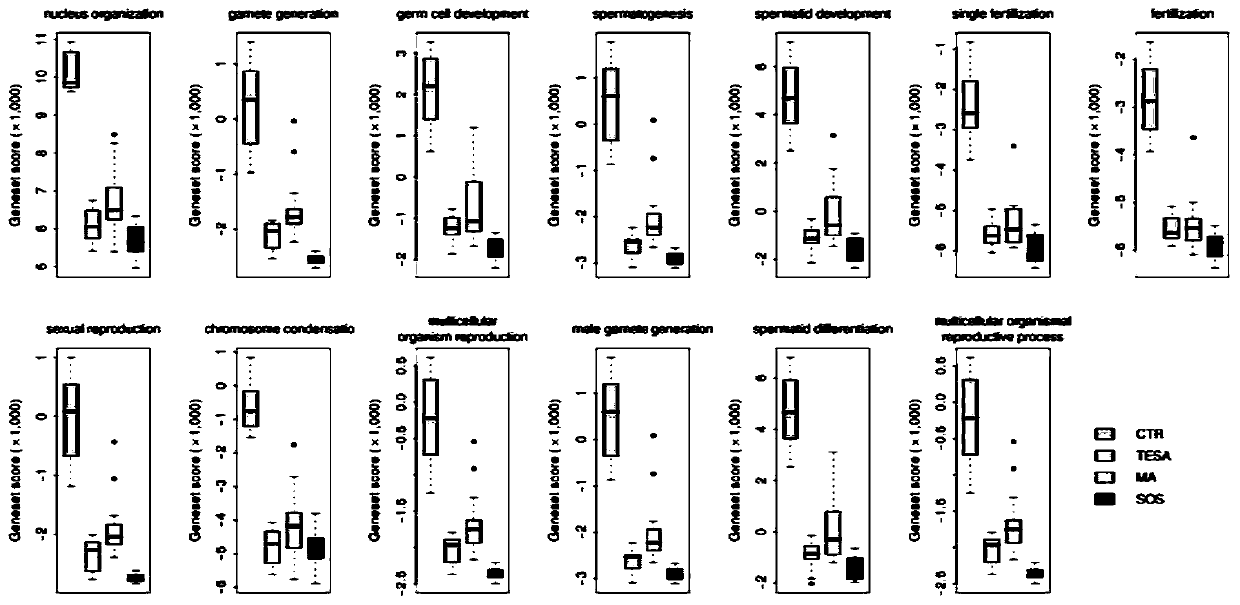Method for predicting whether sperms exist in testis of azoospermia patient or not according to seminal plasma mRNA
A technology for azoospermia and testis, applied in the field of medical testing, can solve the problem of inability to determine haploid sperm cells in patients with azoospermia, and achieve the effect of solving the problem of infertility and improving the success rate of sperm retrieval.
- Summary
- Abstract
- Description
- Claims
- Application Information
AI Technical Summary
Problems solved by technology
Method used
Image
Examples
Embodiment 1
[0035] 1.1 Collection and processing of semen samples
[0036] 2ml of 30 normal semen and 42 azoospermic semen were collected and frozen in liquid nitrogen. Normal semen was obtained from the Human Sperm Bank of Guangdong Province. Azoospermia was defined as semen was taken every 4 to 5 weeks, and no sperm was found in microscopic examination after three semen centrifuges. Semen was centrifuged twice at low speed and the supernatant was used for RNA sequencing.
[0037] 1.2 Isolation and sequencing of RNA
[0038] The mirVana miRNA isolation kit can be used to separate large fragments and small fragments of RNA, and after separation, the quality, size distribution and quantity of RNA can be analyzed using Bioanalyer2100 (Agilent).
[0039] 1.3 Testicular multipoint biopsy
[0040] The patient was placed in the supine position, the surgical area was routinely disinfected, a sterile drape was spread, and internal spermatic nerve block anesthesia was performed with 1% lidocai...
PUM
 Login to View More
Login to View More Abstract
Description
Claims
Application Information
 Login to View More
Login to View More - R&D
- Intellectual Property
- Life Sciences
- Materials
- Tech Scout
- Unparalleled Data Quality
- Higher Quality Content
- 60% Fewer Hallucinations
Browse by: Latest US Patents, China's latest patents, Technical Efficacy Thesaurus, Application Domain, Technology Topic, Popular Technical Reports.
© 2025 PatSnap. All rights reserved.Legal|Privacy policy|Modern Slavery Act Transparency Statement|Sitemap|About US| Contact US: help@patsnap.com



